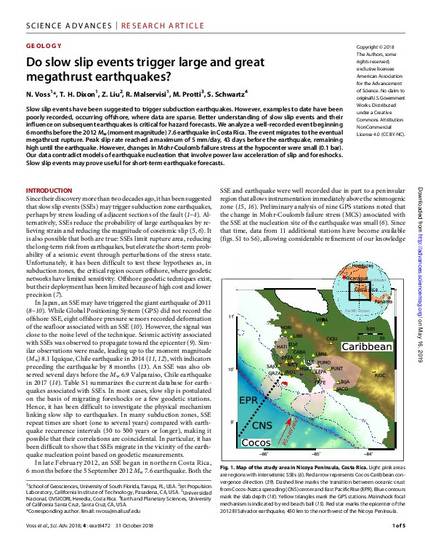
Slow slip events have been suggested to trigger subduction earthquakes. However, examples to date have been poorly recorded, occurring offshore, where data are sparse. Better understanding of slow slip events and their influence on subsequent earthquakes is critical for hazard forecasts. We analyze a well-recorded event beginning 6 months before the 2012 Mw (moment magnitude) 7.6 earthquake in Costa Rica. The event migrates to the eventual megathrust rupture. Peak slip rate reached a maximum of 5 mm/day, 43 days before the earthquake, remaining high until the earthquake. However, changes in Mohr-Coulomb failure stress at the hypocenter were small (0.1 bar). Our data contradict models of earthquake nucleation that involve power law acceleration of slip and foreshocks. Slow slip events may prove useful for short-term earthquake forecasts.
Science Advances, v. 4, no. 10, art. eaat8472
Available at: http://works.bepress.com/rocco-malservisi/3/